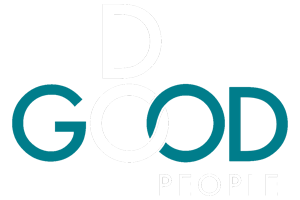Actions speak louder than words, as they say, and this is in fact the only approach to take towards sustainability if we want to build a credible and coherent sustainability narrative.
There seems to be a common trend among companies and their corporate sustainability strategies where ambition and expectations take the lead in their pursue of sustainability, rather than letting their own actions build the credibility and coherence needed.
Thus begins a journey of empty promises where we start to see the many forms greenwashing can take in businesses and that can overshadow genuine sustainability efforts.
But how can companies step back from this trend and build a coherent, credible and strong sustainability narrative, strategy and reputation?

Building a sustainability narrative
A strong corporate sustainability narrative begins with an idea. An idea of what it is that the company advocates for in terms of sustainability, taking care of the planet, people, and the governance of the organization in itself. This is, we first need to establish clear and achievable parameters of what it is we believe in.
There is no need for unnecessary complications, but rather just tell this latter story (or idea) clearly and truthfully, and accompany it with achievable targets, goals and actions. It is also important to base this narrative on data, on evidence and science, so that we can let the latter guide effective long term action.
A coherent narrative
Having a coherent sustainability narrative is quite self explanatory; it means finding the coherence between what you advocate for and what you are doing to achieve the goals set out according to your sustainability story and beliefs.
But, there is no coherence without commitment. An honest and achievable sustainability narrative needs to be guided, by steps, stages or any kind of targets set out for the short, mid and long term. Setting objectives and aiming for specific measurable results is what builds up said coherence, as the company commits to achieving a tangible target based upon its sustainability story or narrative.
Another key element in building coherence is taking into account and incorporating relevant stakeholders to help develop said narrative. This is important in as much as they are the ones who can grant trust and credibility.
The sustainable reputation guide
Actions bring credibility
Sustainability can be very complex, to the point of being paralyzing. And although companies have a great responsibility in pushing it forward, it can be hard to know where or how to start. But a sustainability narrative cannot thrive without actions, so how can we gain credibility, maintain coherence and take effective action?

Ideally, you would be able to plan out every single element of the sustainability strategy in the long term, but unfortunately it is not that simple. Precisely because of its complexity and its ever-changing nature, we cannot aim for moon, but that should not be a deterrent quality, rather the opposite.
We can start by simplifying actions, dividing them into achievable goals or processes that will slowly build our way towards an ever-increasing improved sustainability performance.
Because there is no end goal, but rather a continuous path for improvement and learning, focusing on actually achieving key results and measurable progress will continuously serve the sustainable purpose, strategy and corporate culture. Thus we can separate our sustainability narrative from the vagueness of ambitions and bring it closer to objective credibility.
Incorporate sustainability throughout the company
Sustainability cannot be a one department or one policy thing, it is only ever effective and productive when we integrate it throughout the company. Furthermore, our sustainability narrative cannot thrive if it is not at the heart of employees’ and other relevant stakeholders’ everyday work and purpose.
How can we take action in order to engage people at every level of the company into the sustainability narrative and strategy?

In DoGood we believe that working collectively can help us find that which alone may seem unattainable or unimportant. That is why we think the workplace is the perfect environment to find that collective eagerness to make a difference, both for the sustainability and purpose of the company and a more sustainable way of being for all employees.
Through our technology we help companies establish ESG impact objectives for employees in regards to the sustainability strategy of the company. We are able to activate and track employees’ impact, creating engagement that translates into improved ESG metrics, reputational value and an overall positive impact for the environment and society.







